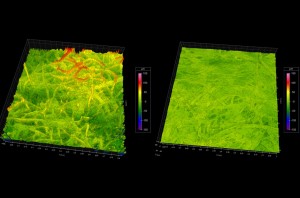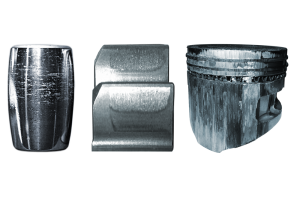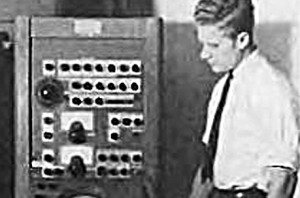Welcome to the Surface Roughness Analysis Blog
Why do brakes squeak? When will a gasket leak? What caused the haziness in my painted finish?
Surface texture and function are tightly linked. Understanding the relationship between texture and function, and sharing that information with engineers and quality professionals, is what Michigan Metrology is all about.
The articles in this blog explore the concepts of surface texture analysis and measurement. We show how you can apply these concepts to solve problems related to leaks, squeaks, appearance, wear, noise, fit, friction, vibration, adhesion, and many other functions.
Looking for more information on specific surface texture parameters? Visit our Surface Texture Parameters Glossary for an introduction to dozens of 3D surface roughness analysis parameters.
And, if you want to learn much more about surface texture consider attending our online and in-person classes for an immersive introduction to the many concepts in surface analysis.

Scaling and Auto-Scaling
August 29, 2022The vertical scale of most surface roughness data is highly exaggerated so that the detail can be more readily discerned. In reality, the actual slopes are fairly gradual. At 1:1

The work of Osborne Reynolds
August 22, 2022Osborne Reynolds, born August 23, 1842 Many engineers will recognize Osborne Reynolds as a pioneer in the studies of fluid mechanics and air flow. But Reynolds was also a key

What can I expect from a contract measurement lab?
August 15, 2022Accurate measurement keeps processes within specifications, which is, of course, key to producing quality goods. But the equipment required to acquire accurate data can be expensive to purchase and operate.

What are the Void Volume Parameters?
August 8, 2022Fluid retention is a critical function of the surface texture in many applications. These surfaces may need to retain oil for lubrication, for example, or fluids may need to be

Scoring, scuffing, and galling
August 2, 2022So many wear mechanisms…so many definitions “Wear” is the progressive modification to a surface. It may result in a loss, deposit, or redistribution of material[1]. Quantifying different types of wear

Friction and Wear of Materials
July 25, 2022For those of you who have taken my class, you know that this is an important resource for me. Ernest Rabinowicz really pioneered our understanding of friction and wear, both

The “leaks and squeaks” images
July 18, 2022Over the years we’ve shown these images frequently on our website (which has just been updated, by the way!). Taken together, they sum up the kinds of issues we see—and

Bandpass and Notch Filters
July 11, 2022It’s a regular refrain on this blog: surface texture consists of a spectrum of spatial wavelengths, ranging from shorter spatial-wavelength roughness through longer spatial-wavelength waviness and form. Through the process

Celebrating Floyd Firestone
July 5, 2022Floyd Alburn Firestone was an acoustical physicist with wide-ranging talents, with important contributions in fields including acoustics, non-destructive testing, medicine, and surface texture. He is remembered as developing the first

Micro vs macro lead
June 28, 2022Rotary lip seals create a boundary around shafts in rotary equipment, typically to retain lubricant on one side versus air or gas on the other. On first consideration, it would

Ra changes when the cutoff changes
June 21, 2022The Roughness Average, or average roughness parameter, Ra, is the average of the surface heights of every point along the “roughness profile.” Its equivalent for areal (3D) measurements is the

The Surface Texture Answer Book
June 15, 2022I’ve been working with surface roughness for over 30 years…yet I am always looking for ways to expand my knowledge. This book has been in heavy rotation for me since
